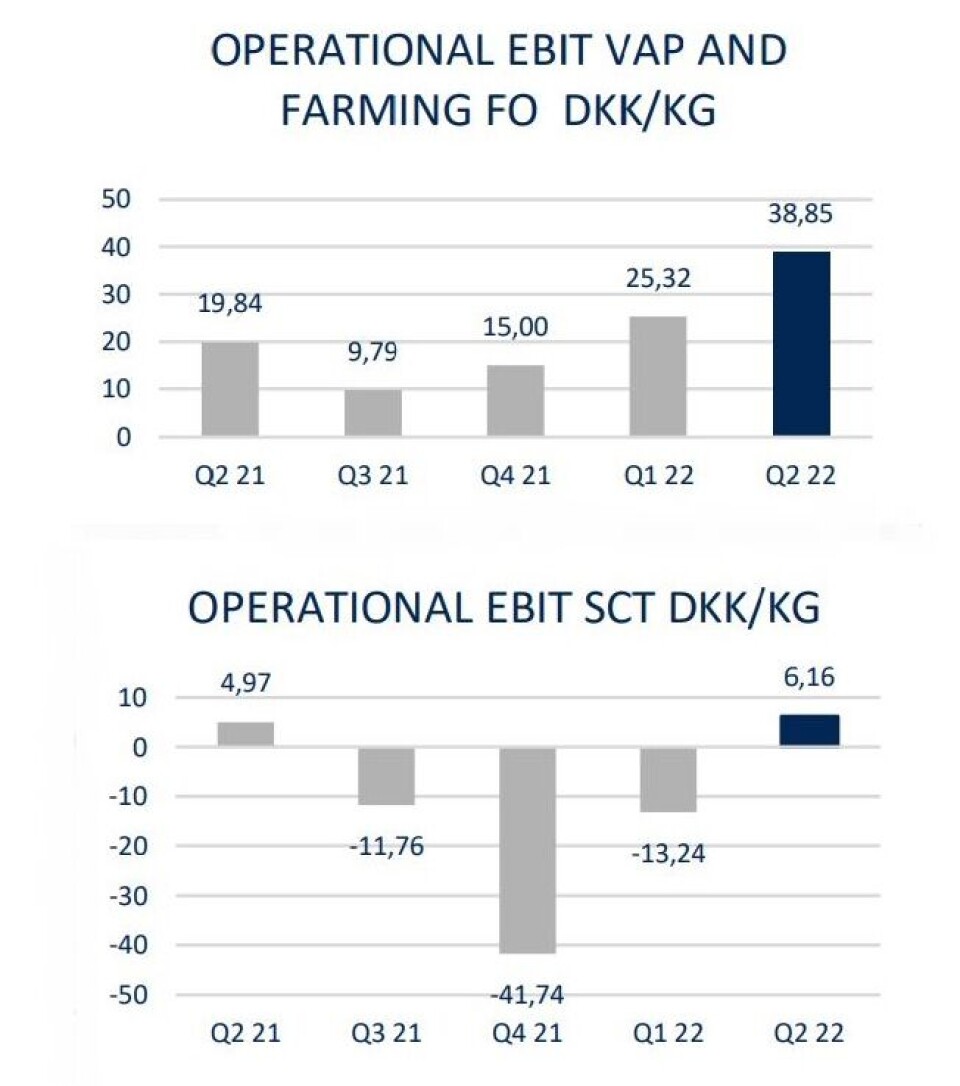Quarterly results

Bakkafrost doubles profit despite lower harvest and Scottish mortalities
High prices and good biology in the Faroes boosted earnings in second quarter
Faroes and Scotland salmon farmer Bakkafrost earned record revenues and operating profit in the second quarter of this year, driven by high spot prices and strong biological performance in the Faroes.
Profit for the quarter increased to DKK 845 million (£96 m), double the DKK 428m earned in the same period last year.
But unspecified problems continued in the sea in Scotland, with cost for incident-based mortality jumping from DKK 7 m in Q2 2021 to DKK 57 m.
Challenges in one area
“The farming operation in Scotland has improved compared to previous quarters, but we have had some challenges in one area in this quarter,” said chief executive Regin Jacobsen in a press release.

“Our investments in new hatcheries for the production of large and high-quality smolt is the key to transforming the operation in Scotland and we are well on our way with the first of the new hatcheries at Applecross, significantly increasing smolt production capacity in 2023.
Jacobsen said the company was satisfied with the results for the quarter and was especially pleased with the strong biological performance in the Faroe Islands, where Bakkafrost had the lowest sea lice levels for eight years, low mortality rates, and strong growth.
Large smolt advances
“We have also made significant advancements in our large smolt strategy, learning from our experiences [in the] past year. Adjustments to the large smolt production have led to further improved smolt quality and robustness,” said Jacobsen.
“The salmon market in this quarter has been marked by all-time high prices. We have seen strong post-Covid come-back from the Horeca (hotels, restaurants, catering) market while the global supply has decreased by more than 6% in two consecutive quarters.
“The supply of fresh salmon to the spot market has been further constricted by high contract share levels in the industry. In combination with strong demand, this has led to all-time high salmon prices. For the next year at least, supply growth will be low, and we expect moderately strong prices.
“The salmon industry is also affected by the current strong inflation on raw materials and energy. Due to the long production time, there is a significant time lag before the increased costs will be fully visible in the financials of the salmon farming companies.”
Lower harvests
Bakkafrost’s record revenues were made on lower harvests than last year.
The company harvested 19,700 tonnes gutted weight in Q2, down from 28,200 tgw in Q2 2021. The harvest comprised 13,100 tgw (Q2 2021: 17,600 tgw) in the Faroes, and 6,600 tgw (10,600 tgw) in Scotland.
Total harvested volumes for the first half of this year were 41,200 tgw (49,200 tgw), comprising 30,600 tgw (31,600 tgw) in the Faroes and 10,600 tgw (17,600 tgw) in Scotland.
Bakkafrost expects to harvest 68,000 tgw (67,217 tgw) in the Faroes this year and 35,000 tgw in Scotland (29,672 tgw).
It has targeted an annual harvest of 150,000 tgw by 2026, 100,00 tgw from Faroes and 50,000 tgw from Scotland, where it is investing heavily in new facilities to grow 500 g post-smolts to improve biological performance.